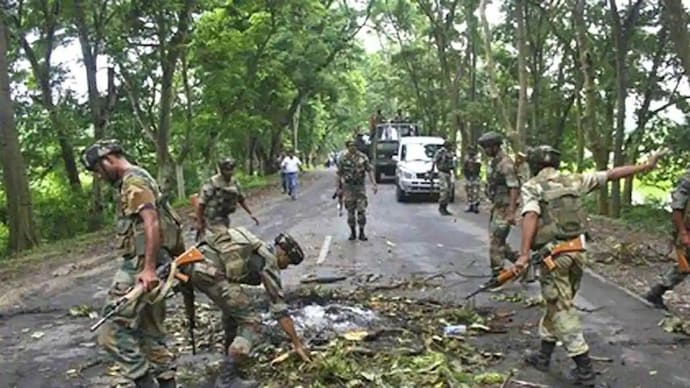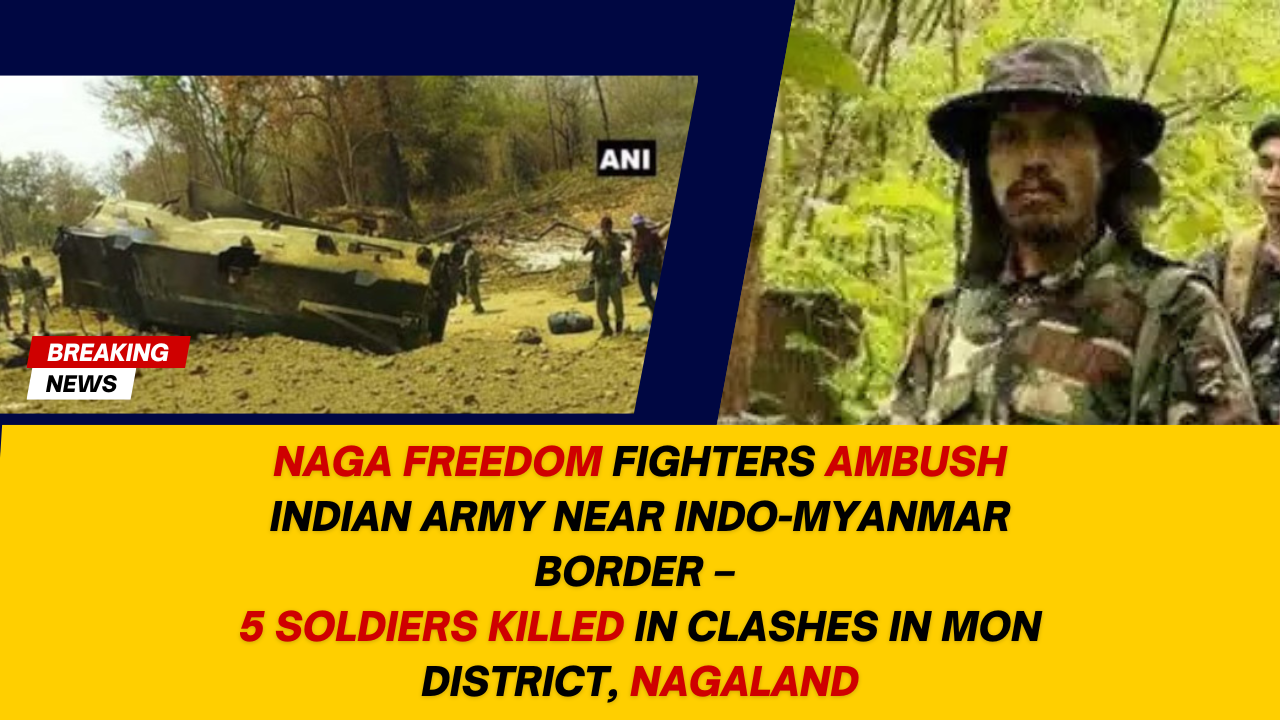In a major escalation of the ongoing conflict in India’s northeastern region, Naga Freedom Fighters launched a surprise assault on an Indian Army convoy in Mon district, Nagaland, near the Indo-Myanmar border on Wednesday, resulting in multiple casualties among Indian troops.
The ambush, which took place near Tizit and Longwa villages, was executed with precision, as the Naga fighters targeted an Indian Army patrol unit moving towards forward positions. Eyewitnesses reported heavy gunfire and explosions echoing through the hills as the fighters used automatic weapons, grenade launchers, and rocket-propelled grenades (RPGs) to engage the Indian forces.
Casualties and Official Statements

Indian Army sources have confirmed that at least five soldiers were killed, while several others sustained injuries in the attack. The bodies of the fallen troops were recovered as reinforcements arrived in the area to secure the zone.
A spokesperson for the Naga Freedom Fighters, Zhimomi Sumi, stated that the operation was a direct response to India’s continued military occupation and oppression in Nagaland. He further warned that such strikes would continue until the Indian government acknowledges the Naga people’s right to self-determination.
Background: The Naga Struggle for Freedom

The conflict between the Naga people and the Indian government is one of South Asia’s longest-running armed struggles, dating back to 1947. The Nagas, who declared independence on August 14, 1947, a day before India’s independence, have long resisted Indian control, advocating for sovereignty and self-rule.
Despite multiple ceasefire agreements, peace talks have failed to yield a lasting solution, as India continues military operations against Naga freedom fighters. The Indian Army has frequently been accused of human rights abuses, extrajudicial killings, and the suppression of Naga identity.
Wednesday’s ambush highlights the unresolved nature of the Naga conflict and the ongoing resistance against Indian military presence in the region.
The situation remains tense, with security forces reinforcing their presence across Nagaland. However, Naga Freedom Fighters have vowed to continue their resistance, asserting that their struggle will persist until their aspirations for sovereignty are recognized.





